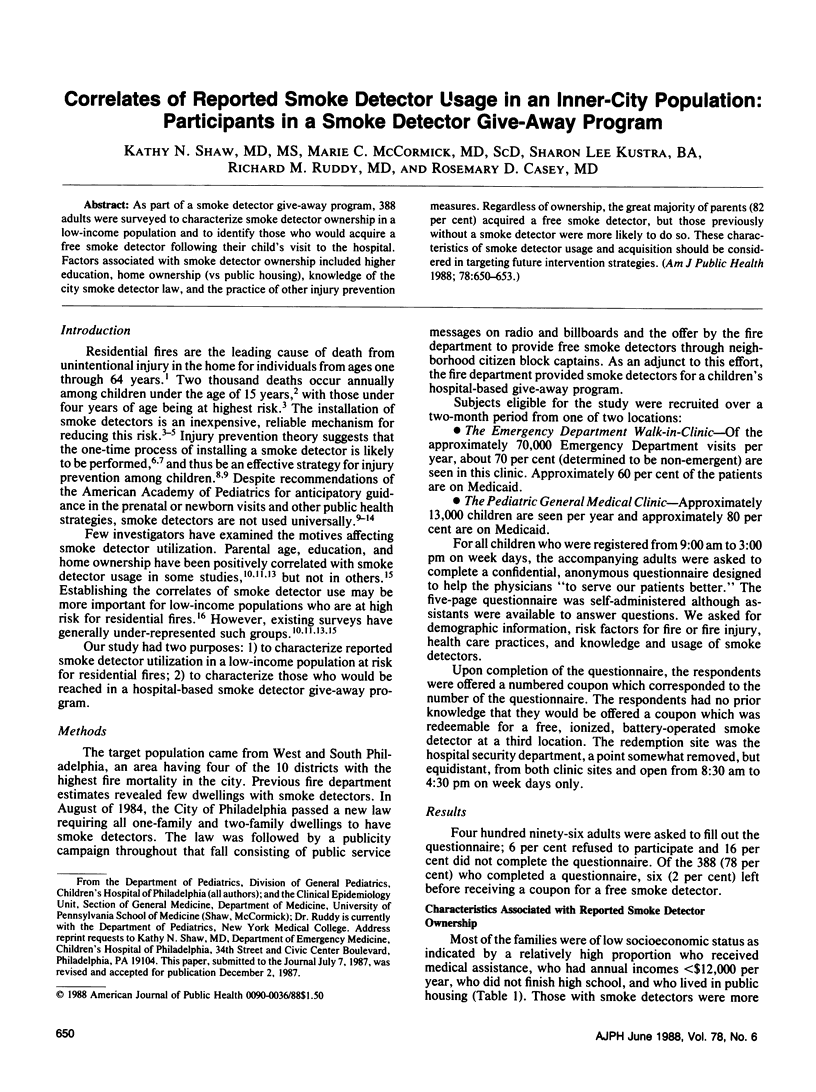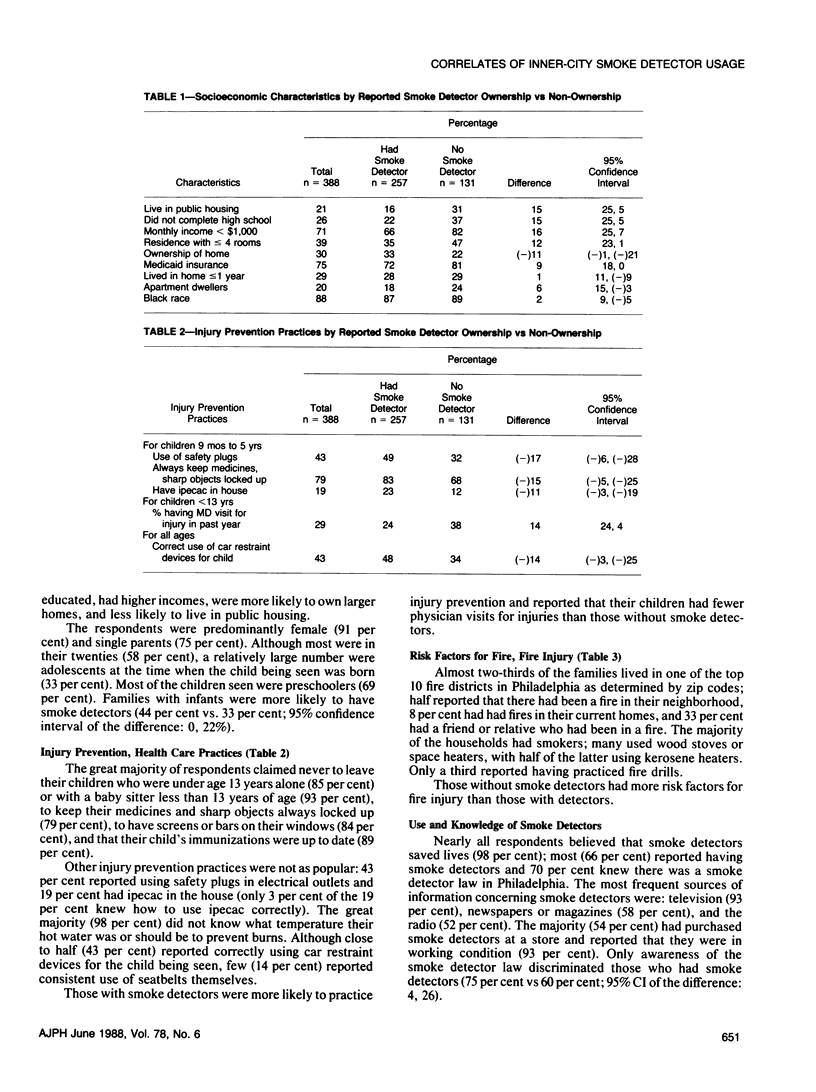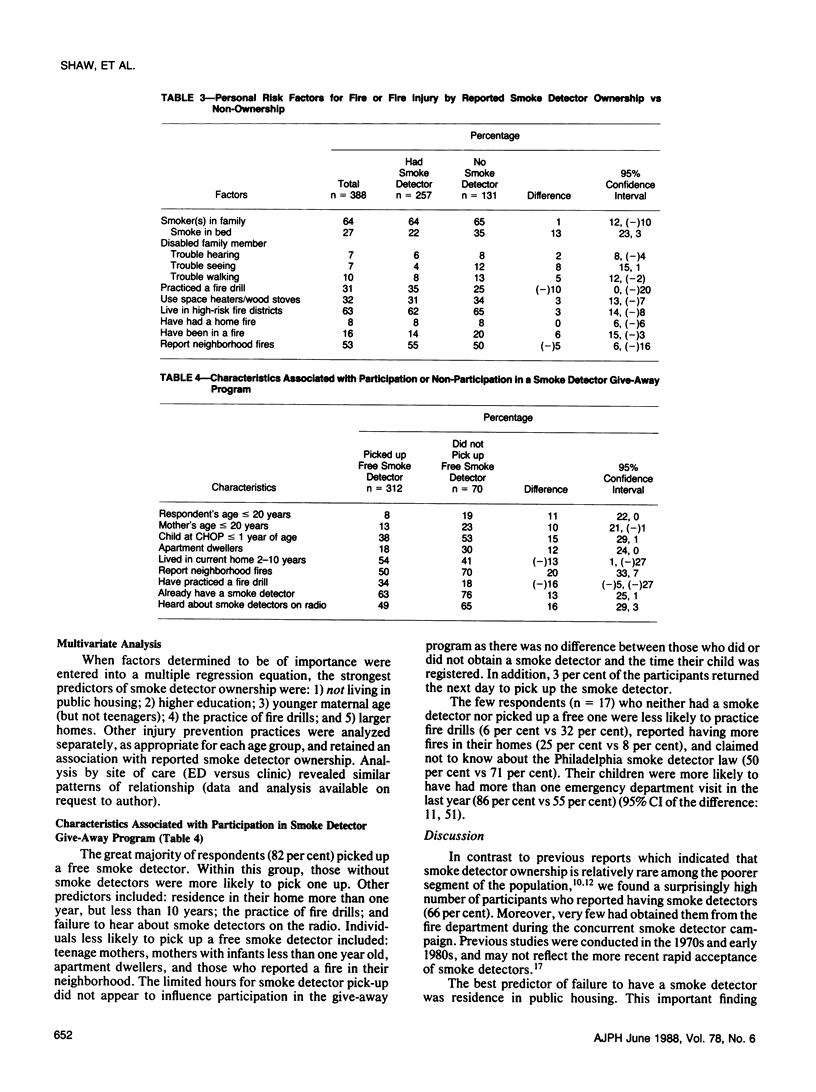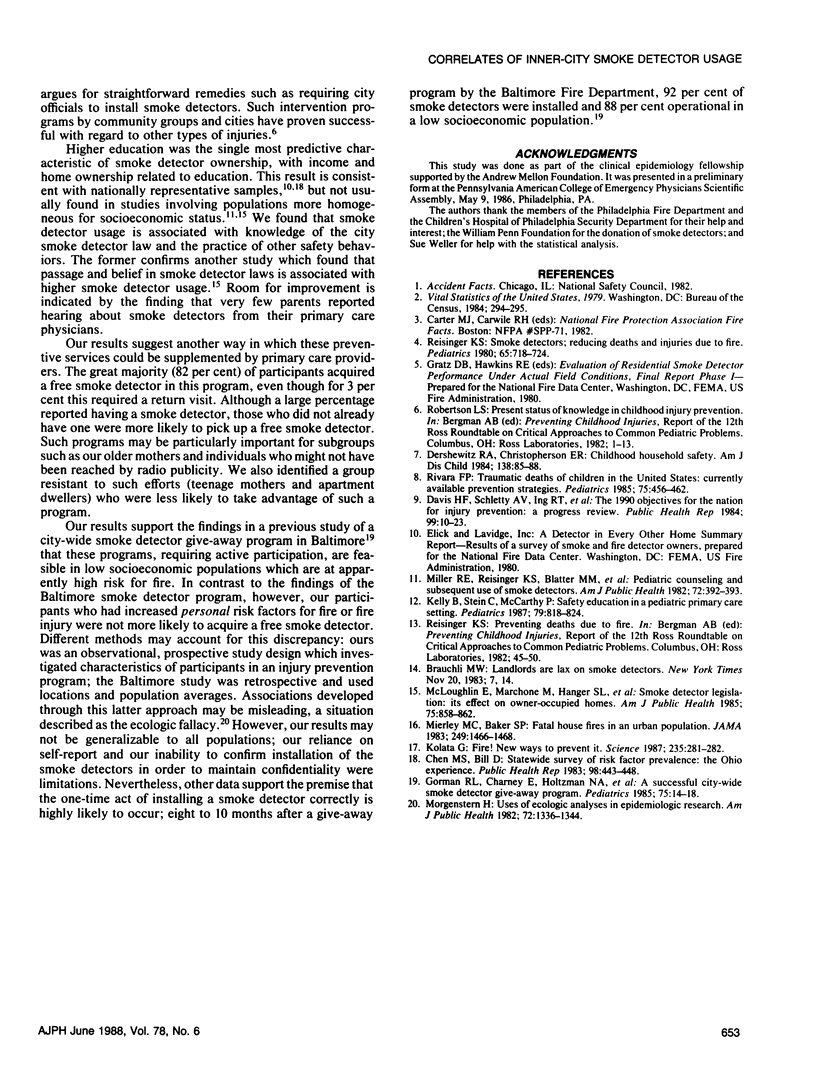Abstract
As part of a smoke detector give-away program, 388 adults were surveyed to characterize smoke detector ownership in a low-income population and to identify those who would acquire a free smoke detector following their child's visit to the hospital. Factors associated with smoke detector ownership included higher education, home ownership (vs public housing), knowledge of the city smoke detector law, and the practice of other injury prevention measures. Regardless of ownership, the great majority of parents (82 per cent) acquired a free smoke detector, but those previously without a smoke detector were more likely to do so. These characteristics of smoke detector usage and acquisition should be considered in targeting future intervention strategies.
Full text
PDF



Selected References
These references are in PubMed. This may not be the complete list of references from this article.
- Chen M. S., Jr, Bill D. Statewide survey of risk factor prevalence: the Ohio experience. Public Health Rep. 1983 Sep-Oct;98(5):443–448. [PMC free article] [PubMed] [Google Scholar]
- Davis H. F., Jr, Schletty A. V., Ing R. T., Wiesner P. J. The 1990 objectives for the nation for injury prevention: a progress review. Public Health Rep. 1984 Jan-Feb;99(1):10–23. [PMC free article] [PubMed] [Google Scholar]
- Dershewitz R. A., Christophersen E. R. Childhood household safety. An overview. Am J Dis Child. 1984 Jan;138(1):85–88. doi: 10.1001/archpedi.1984.02140390073022. [DOI] [PubMed] [Google Scholar]
- Gorman R. L., Charney E., Holtzman N. A., Roberts K. B. A successful city-wide smoke detector giveaway program. Pediatrics. 1985 Jan;75(1):14–18. [PubMed] [Google Scholar]
- Kelly B., Sein C., McCarthy P. L. Safety education in a pediatric primary care setting. Pediatrics. 1987 May;79(5):818–824. [PubMed] [Google Scholar]
- Kolata G. Fire! New Ways to Prevent It: The United States and Canada have by far the highest death rate in the world from fires, but new methods may reduce the fire toll by making people more aware of the problem. Science. 1987 Jan 16;235(4786):281–282. doi: 10.1126/science.235.4786.281. [DOI] [PubMed] [Google Scholar]
- McLoughlin E., Marchone M., Hanger L., German P. S., Baker S. P. Smoke detector legislation: its effect on owner-occupied homes. Am J Public Health. 1985 Aug;75(8):858–862. doi: 10.2105/ajph.75.8.858. [DOI] [PMC free article] [PubMed] [Google Scholar]
- Mierley M. C., Baker S. P. Fatal house fires in an urban population. JAMA. 1983 Mar 18;249(11):1466–1468. [PubMed] [Google Scholar]
- Miller R. E., Reisinger K. S., Blatter M. M., Wucher F. Pediatric counseling and subsequent use of smoke detectors. Am J Public Health. 1982 Apr;72(4):392–393. doi: 10.2105/ajph.72.4.392. [DOI] [PMC free article] [PubMed] [Google Scholar]
- Morgenstern H. Uses of ecologic analysis in epidemiologic research. Am J Public Health. 1982 Dec;72(12):1336–1344. doi: 10.2105/ajph.72.12.1336. [DOI] [PMC free article] [PubMed] [Google Scholar]
- Reisinger K. S. Smoke detectors: reducing deaths and injuries due to fire. Pediatrics. 1980 Apr;65(4):718–724. [PubMed] [Google Scholar]
- Rivara F. P. Traumatic deaths of children in the United States: currently available prevention strategies. Pediatrics. 1985 Mar;75(3):456–462. [PubMed] [Google Scholar]


